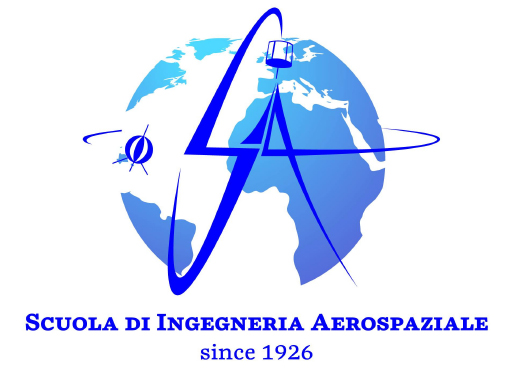Laurea a statuto speciale
Scuola di Ingegneria Aerospaziale
Fai Spazio al tuo futuro!
La Scuola di Ingegneria Aerospaziale (SIA) della Università di Roma La Sapienza è un’istituzione accademica all’avanguardia nel campo dell’ingegneria aerospaziale, sin dal 1926. La Scuola offre oggi un percorso di formazione di III Livello riservato a Laureati in Ingegneria che vogliano approfondire e mettere in pratica le proprie conoscenze, seguendo un approccio multidisciplinare tra didattica e ricerca tecnologica
Missione
Frequentando la Scuola di Ingegneria Aerospaziale imparerai a:
Progettare, sviluppare e testare sistemi spaziali
come lanciatori, satelliti, rovers e droni
Applicare le tue conoscenze in diversi settori industriali,
tra cui l’ingegneria aerospaziale, l’automazione, l’elettronica e le telecomunicazioni, la difesa e la ricerca applicata.
Utilizzare le tecnologie avanzate presenti nei laboratori,
come i simulatori spaziali, i test-bed robotici, la stampa 3D, e l’intelligenza artificiale.
Lavorare in team
che svolgono ricerche avanzate in collaborazione con prestigiosi enti istituzionali e partner industriali nazionali e internazionali.
Risolvere problemi complessi
in modo creativo e innovativo.
La Scuola di Ingegneria Aerospaziale è rivolta a:
Laureati magistrali in Ingegneria Aerospaziale che desiderano specializzarsi e completare il loro bagaglio di conoscenze per migliorare le proprie prospettive di carriera
Laureati magistrali in Ingegneria (Meccanica, Elettrica, Elettronica, Informatica, delle Telecomunicazioni e altre specializzazioni) con il desiderio di indirizzare la loro carriera verso il mondo dello Spazio
Professionisti che ambiscono ad approfondire le proprie conoscenze teoriche e pratiche nel settore aerospaziale
Professionisti che mirano ad un cambio di carriera in ambito aerospaziale.
Richiedi la Brochure
Percorso
Personalizza il tuo percorso formativo
PRIMO ANNO
INSEGNAMENTI OBBLIGATORI
Astrodynamics
Satellites remote sensing: acquisition system and data processing methods
Design of space vehicles
Navigation
Attitude Dynamics, Determination and Contro
TRE INSEGNAMENTI A SCELTA TRA I SEGUENTI
Dynamics and Control of space structures
Numerical modeling of space structures
Orbit determination
Fundamentals of electronics
Spacecraft control
Electrical power systems for space exploration
Electronics for space telecommunication systems
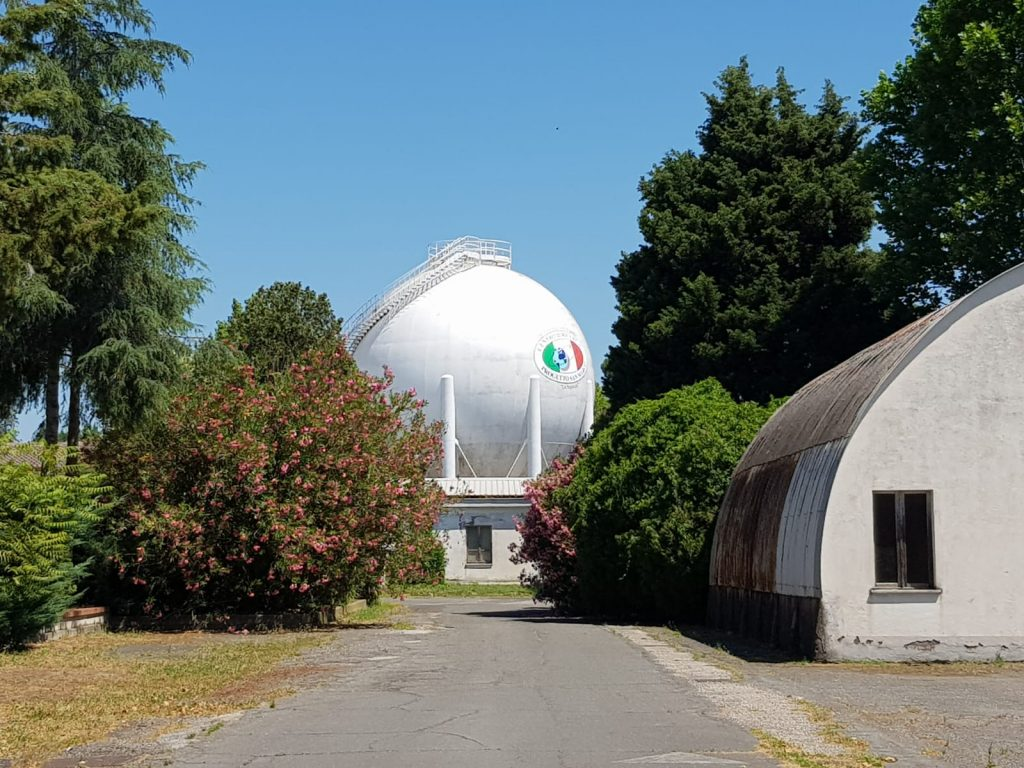
SECONDO ANNO
INSEGNAMENTI OBBLIGATORI
Advanced topics in aerospace engineering
Design of electronic systems for space: reliability engineering
Design of electronic systems for space: hardware and software design techniques
Stage in azienda o tirocinio presso i laboratori
UN INSEGNAMENTO A SCELTA TRA I SEGUENTI
Advanced control of space vehicles
Optimal control and game theory in flight mechanics
Robotics and Artificial Intelligence in Space Engineering
Space technology
UN INSEGNAMENTO A SCELTA TRA I SEGUENTI
Modelling of Flexible Space Launchers
Fundamentals of nuclear engineering for astronautics
Hybrid propulsion and new launch systems
Flight mechanics of launch and reentry systems
Law in space activities
Life support systems for planetary exploration
Radar Systems for Astronautics
Space Debris Detection and Removal
Aerodynamics of continuous and rarefied flows
Thermal control and thermomechanical interactions in space vehicles
Theory and operations of formation flying
Low thrust propulsion
Opportunità di tirocinio e ricerca
All'interno del percorso formativo è previsto uno stage da svolgere presso i laboratori della Scuola, all'interno delle attività svolte in collaborazione con i più importanti enti di ricerca nazionali e internazionali, o presso piccole, medie e grandi aziende operanti nel settore aerospaziale, come Thales Alenia Space Italia, MBDA, Avio, Telespazio
La Tesi è la prova finale di Laurea e consiste nel presentare un elaborato sperimentale o progettuale, da eseguire sotto la guida di un docente del corso di Laurea a Statuto Speciale, anche in collaborazione con industrie, agenzie e centri di ricerca. Alla discussione della Tesi possono accedere gli studenti che abbiano superato tutti gli esami di profitto degli insegnamenti inseriti nel proprio piano di studi.
Info Utili
Informazioni utili: Tutto ciò che serve per iniziare
Per iscriversi alla Scuola di Ingegneria Aerospaziale:
È necessario aver conseguito un titolo di studio in Ingegneria conseguito in Italia e ottenuto al termine di 5 anni (laurea magistrale o laurea a ciclo unico) o un titolo equivalente estero.
Gli studenti in possesso di un titolo di studio in Ingegneria Aeronautica o Aerospaziale o Astronautica o Spaziale, ottenuto al termine di 5 anni di corso di studio universitario, possono a richiesta essere iscritti direttamente al secondo anno del corso.
Per l’immatricolazione lo studente deve inviare all’indirizzo e-mail presidesia@uniroma1.it i seguenti documenti :
1) copia di un documento d’identità valido
2) copia del certificato del titolo di studio in ingegneria
Al ricevimento della documentazione, l'amministrazione della Scuola comunicherà all’indirizzo email fornito dallo studente le istruzioni per il perfezionamento dell’iscrizione.
E' consigliabile inviare la documentazione il prima possibile, a partire da giugno 2024, così da poter completare l'immatricolazione per l'inizio delle lezioni, previsto per la seconda metà di settembre. E' comunque possibile presentare domanda di iscrizione fino alla fine del mese di ottobre (anche in questo caso inviando la documentazione all'indirizzo indicato, affinché la segreteria della Scuola si adoperi per la predisposizione dei bollettini di pagamento delle tasse universitarie).
5 ragioni per iscriversi alla scuola di ingegneria aerospaziale
Imparerai a progettare il futuro.
L’ingegneria aerospaziale è un campo in continua evoluzione, con nuove tecnologie e sfide emergenti. Iscrivendoti alla Scuola di Ingegneria Aerospaziale, avrai l’opportunità di imparare da alcuni dei migliori esperti del settore e di essere in prima linea nello sviluppo e nei test di tecnologie innovative e in progetti di ricerca nazionali e internazionali.
Riceverai un boost verso la carriera dei tuoi desideri.
Gli ingegneri aerospaziali sono tra i professionisti più ricercati al mondo. Che tu voglia approfondire la tua formazione o ambisca ad un cambio di carriera, con una seconda laurea in Ingegneria Aerospaziale, avrai accesso a un’ampia gamma di opportunità lavorative in diversi settori industriali tra cui, oltre a quello aerospaziale, i settori legati all’automazione, controllo, elettronica, telecomunicazioni, difesa e ricerca applicata.
Svilupperai competenze trasversali che ti saranno utili in qualsiasi campo.
La Scuola di Ingegneria Aerospaziale ti consentirà di approfondire ulteriormente le tue conoscenze in ingegneria, fisica, informatica e matematica. Inoltre, svilupperai competenze trasversali come la capacità di risolvere problemi complessi, lavorare in team e comunicare in modo efficace.
Potrai studiare in una delle migliori università d'Italia e d’Europa.
In base ai più prestigiosi ranking internazionali, l’Università di Roma La Sapienza si mantiene ai migliori posti nelle classifiche italiane e internazionali , specialmente in ambito aerospaziale (15esima posizione al mondo nel 2023 Academic Ranking of World Universities). La Scuola offre un percorso formativo di alta qualità e un ambiente di apprendimento stimolante in linea con il prestigio di Sapienza.
Potrai entrare a far parte di una comunità di studenti appassionati.
La Sapienza ospita una comunità di studenti appassionati e motivati in ambito aerospaziale, inclusi gruppi di ricerca e associazioni studentesche. Avrai l’opportunità di conoscere persone che condividono la tua passione per l’aerospazio e la tecnologia!
Ricerca
ACACLAS
Il GN Lab della Scuola di Ingegneria Aerospaziale è responsabile scientifico del progetto finanziato dall’Agenzia Spaziale Europea “ACACLAS (Advanced Collocated Active Control of Large Antenna Structures)”
Responsabile scientifico:
Prof. Paolo Gasbarri
Partners:
Thales Alenia Space – France
Lo studio mira a fornire i concetti e gli strumenti che permetteranno di minimizzare l’interazione tra controllo d’assetto e strutture, problema che affligge i satelliti dotati di grandi antenne e pannelli solari.
Il nostro gruppo si è in particolare concentrato sulla verifica sperimentale di leggi di controllo d’assetto che utilizzassero contestualmente attuatori per il controllo delle vibrazioni.
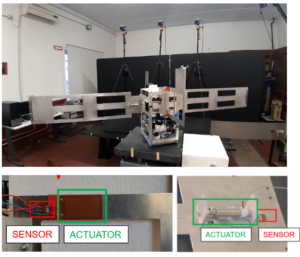
ALCYONE
Autonomous Living Cell analYsis ON-chip for Evaluation of space Environment Effects:
low-power integrated lab-on-chip for the assessment of radiation damage on living systems in nanosatellite missions
Abstract
The project aims at the design and realization of a new analytical platform implementing a series of innovative technologies able to provide a highly-integrated solution for the analysis in-situ of the effects of the space environment on model biological systems and for the evaluation of shielding technologies combined with radioprotective agents. The main objective of the project will be achieved through the development of a lab-on-chip device with integrated thin-film sensors and actuators that will implement an extremely compact cell-incubator capable to sample the status of the cell culture during a space mission using real-time monitoring techniques based on bioluminescence.
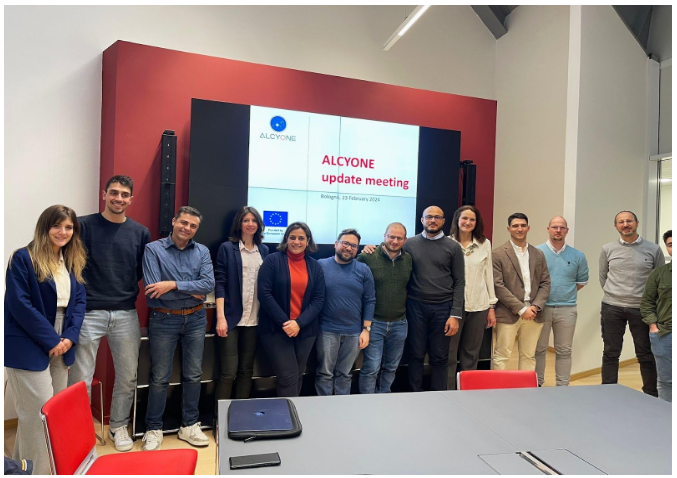
Project details
Unibo Team Leader:
Mara Mirasoli
Unibo involved Department/s:
Dipartimento di Chimica “Giacomo Ciamician”
Coordinator:
“Sapienza” Universita’ Di Roma(Italy)
Other Participants:
ALMA MATER STUDIORUM – Università di Bologna (Italy)
Total Eu Contribution:
Euro (EUR) 1.570.263,75
Project Duration in months:
36
Start Date:
01/01/2023
End Date:
31/12/2025
APHRODITE
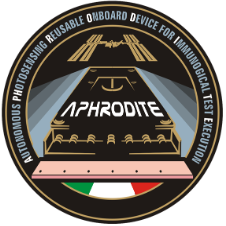
Autonomous PHotosensing Reusable Onboard Device for Immunological Test Execution
The scientific objective of the project is the design, production, testing, and in-orbit demonstration of a compact, reusable and reconfigurable system for performing real-time analysis of biological fluids in manned space missions. In the frame of this project, a crew member onboard the ISS will employ APHRODITE for measuring cortisol and dehydroepiandrosterone (DHEA) in oral fluid, in 4 (plus one additional desired session) separate experiment sessions. The selected target analytes are salivary indicators of immune system impairment and stress levels.
APHRODITE payload is presently planned to be transported to ISS aboard Cygnus pressurized capsule on NG-23 for launch, un-stowed on-orbit in TBC module during the increments INC 73/74, and then retrieved and operated by astronaut for oral fluid sample analysis.
Applications on Earth are envisaged for the APHRODITE device, as it will be suitable for point-of-care testing applications (e.g., emergency medicine, bioterrorism, diagnostics in developing countries, etc…).
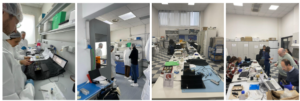
ARAMIS
Presso il simulatore spaziale del Laboratorio di Meccanica del Volo “M.D. SIRINIAN” si sono svolte le prove di collaudo effettuate sul Mock-Up del CubeSat 12U ARAMIS.
Responsabili del laboratorio:
Paolo Teofilatto e Stefano Carletta
Titolo della Ricerca:
PNRM ARAMIS (Advanced Radio Access for MIlitary Solutions)
Ente capofila:
ItalSpazio Srl
All’interno del Laboratorio di Meccanica del Volo è presente un simulatore spaziale che consente di ricreare (1) le condizioni di microgravità necessarie a simulare il moto di assetto dei satelliti e (2) le variazioni del campo geomagnetico registrate dai satelliti durante il loro moto orbitale.
L’utilizzo del simulatore ha permesso di collaudare il sistema di determinazione e controllo di assetto del CubeSat 12U ARAMIS. I test sono stati eseguiti sul Mock-Up del satellite, realizzato presso il Laboratorio di Meccanica del Volo su commessa di ItalSpazio Srl, azienda assegnataria del PNRM ARAMIS del Ministero della Difesa Italiano (Teledife).
Il Mock-Up riproduce le proprietà inerziali del CubeSat ed include attuatori magnetici (magnetorquers) e sensori di assetto equivalenti a quelli di volo. Il software di determinazione e controllo di assetto è stato implementato sul computer di bordo PHOEBE, già sviluppato dal Laboratorio di Elettronica per Nanosatelliti della Scuola per il PocketQube 6P STECCO. Durante il collaudo è stato verificato anche il corretto funzionamento del sistema di telecomunicazione di ARAMIS, che ha permesso l’invio dei comandi al satellite e la ricezione dei dati di telemetria durante i test.
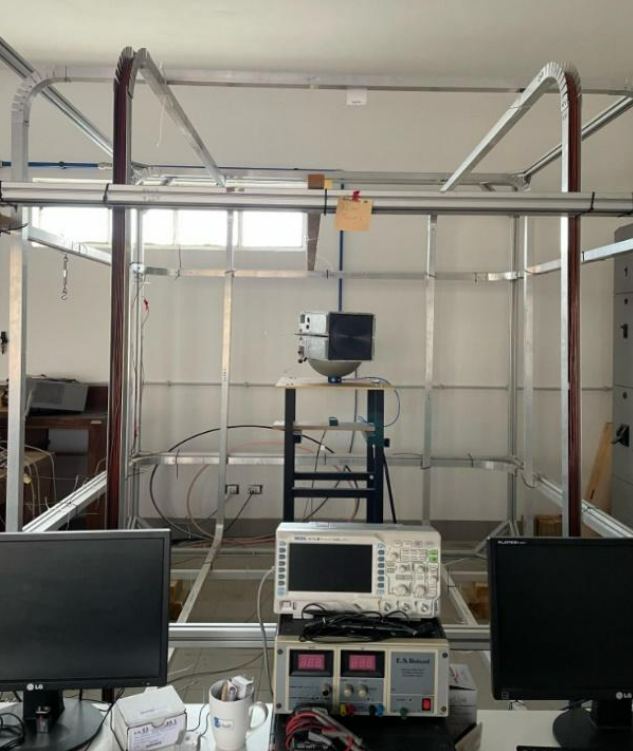
Mock-UP del CubeSat 12U ARAMIS all’interno della Gabbia di Helmholtz che permette di ricreare il campo geomagnetico agente su un satellite durante il suo moto orbitale.
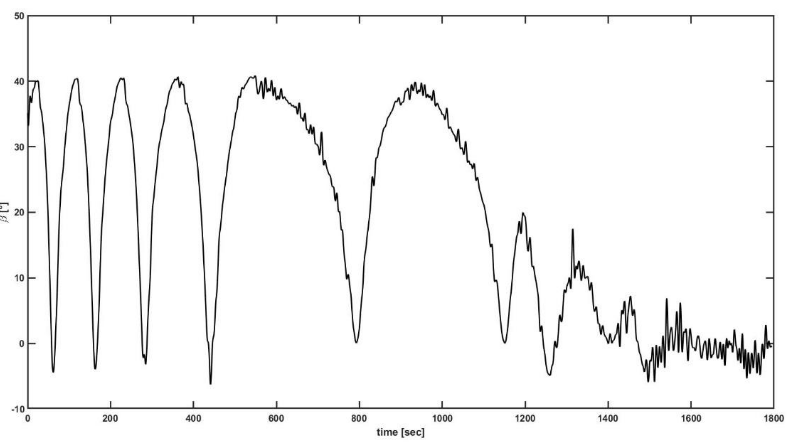
Dati sperimentali dell’andamento nel tempo dell’errore di puntamento durante la fase di stabilizzazione del satellite.
AstroBioCubesat
AstroBio CubeSat (ABCS) is an Italian 3U CubeSat funded by ASI and INAF and developed by the School of Aerospace Engineering, Sapienza Università di Roma, in cooperation with INAF – Osservatorio Astrofisico di Arcetri, University of Bologna and Kayser Italia
The objective of the primary payload is the in-orbit validation of novel lab-on-chip technologies and analytical methods relying on immunoassay tests exploiting chemiluminescence detection for research in astrobiological investigations
ABCS has been launched with the Vega-C maiden flight on July 13th 2022 in a circular orbit (altitude 5980 km, inclination 70°)
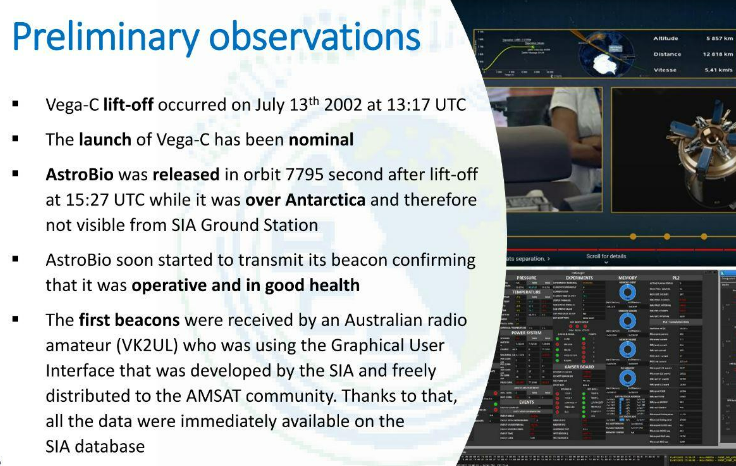
BESIDES: BiomolEcular SIgnature DEtection System
The project proposes the study and development of a new technology for the search for past and present life in robotic and human space exploration missions, based on the recognition of organic molecules and molecular biosignatures correlated with life processes. The proposed technology is based on the development and use of:
An analysis method based on specific recognition elements such as antibodies, enzymes or artificial receptors (molecularly imprinted polymer nanoparticles called nanoMIPs)
Bio/chemiluminescence (BL/CL) based detection methods to determine target molecules with high sensitivity
An analytical format that uses magnetic microbeads as a solid phase for the development of analysis methods
A microfluidic Lab-on-Chip device with integrated optical detection system
BESIDES integrated prototype development
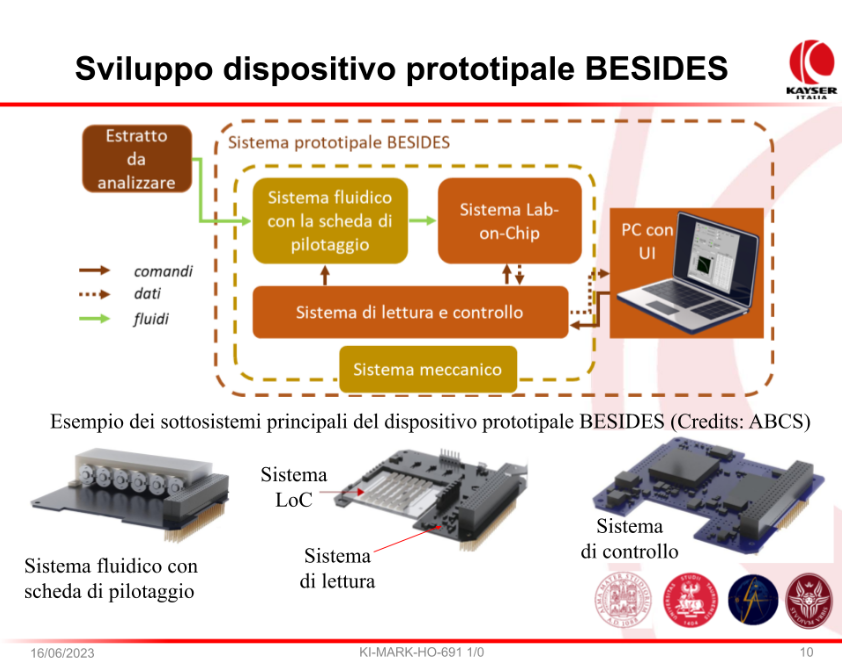
BOREALIS – Biofilm Onboard Radiation Exposure Assessment Lab In Space
BOREALIS is a Cubesat scientific mission aimed at: evaluating the effects of microgravity and ionizing radiation on microbial biofilms; test the combined effectiveness of radiation protection systems based on physical shielding and drug treatment; clarify the mechanism of generation of secondary particles with a high dose factor generated by the interaction between the satellite materials and high-energy cosmic radiation.
A multidisciplinary approach will be adopted which envisages the construction of a nanosatellite platform equipped with cells of genetically modified microorganisms, grown in sessile conditions; a scientific payload that allows the execution of biological experiments on cultures of living cells exposed to the space environment and their observation in real time under the epifluorescence microscope; a system of dosimetry and spectrometric analysis of the radiations to which the cells are exposed and of shielding and pharmacological protection of the cells themselves.
The BOREALIS mission will include a phase on a Low Earth Orbit (LEO) at 700 km to highlight the effects of microgravity and a second phase at 1100-1600 km to study the effects of a higher orbit radiative environment. This mission therefore aims to provide crucial information for the preparation of future human missions to the Moon and Mars.
ComeOnBoardPSG
“COME-ON-BOARD-PSG! : Computazione autOnoma con Machine lEarning ON-Board per Ottimizzazione Acquisizioni e analisi Real-time dei Dati Iper-spettrali su Prisma Seconda Generazione”
Responsabile scientifico:
Dario Spiller
Partner/Cofinanziator:
Agenzia Spaziale Italiana (ASI)
Descrizione del Progetto
Il progetto, finanziato e promosso da ASI, mira a rafforzare e consolidare le potenzialità della prossima missione PRISMA Second Generation (PSG) specificatamente tramite tecniche di edge-computing (EC) per elaborazioni di acquisizioni iperspettrali direttamente a bordo del satellite. La tecnologia proposta sará verificata e validata tramite esperimenti end-to-end, avvalendosi della struttura sperimentale MONSTER.
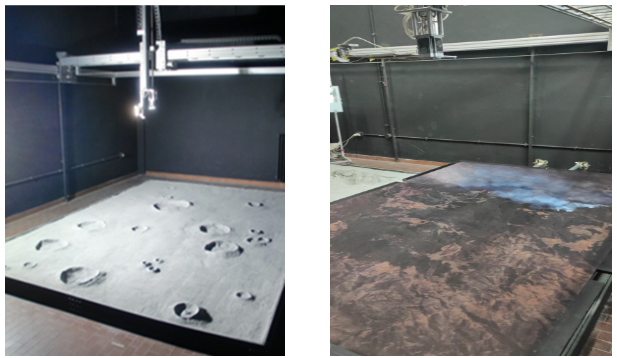
Figura 1 Sistema robotico di simulazione MONSTER, con impianto originale per simulazione di landing su suolo lunare (a) e nuovo layer sovrapposto per la simulazione E2E di missioni per remote sensing (b).
Il GN Lab-ricerca FORMATION FLYING Thales
Il GN Lab della Scuola di Ingegneria Aerospaziale collabora da anni con Thales Alenia Space-Italia
nell’ambito dello sviluppo di sistemi di guida, navigazione e controllo di formazioni di satelliti.
Alcune delle attività più recenti:
Sviluppo di un propagatore orbitale per formazioni di N satelliti
Satelliti in orbita molto bassa (Very Low Earth Orbitsm, VLEO)
Sistemi di controllo tramite superfici aerodinamiche
Responsabile scientifico:
Marco Sabatini
Partners:
Thales Alenia Space Italia
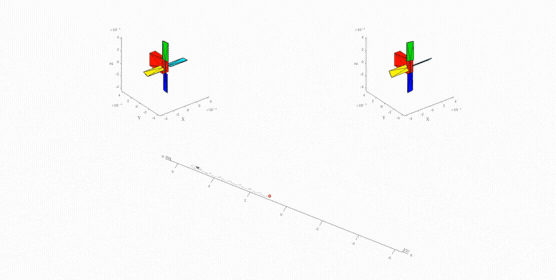
IAC_Formation_Train2TrainPlusAttitude
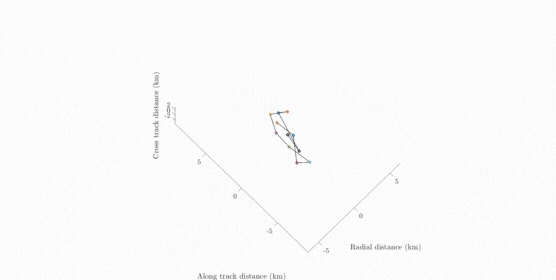
HelixDistributedCoMpov
Moonlight
Il GN Lab della Scuola di Ingegneria Aerospaziale è partner di Telespazio nell’ambito del progetto Moonlight, finanziato dall’agenzia spaziale europea https://www.esa.int/Applications/Connectivity_and_Secure_Communications/Moonlight
Il nostro gruppo si occuperà in particolar modo dello sviluppo di un algoritmo di stima che permetta a un utente in orbita lunare, o a un rover sulla superficie lunare, di determinare la sua posizione grazie alla presenza di quattro satelliti per la navigazione.
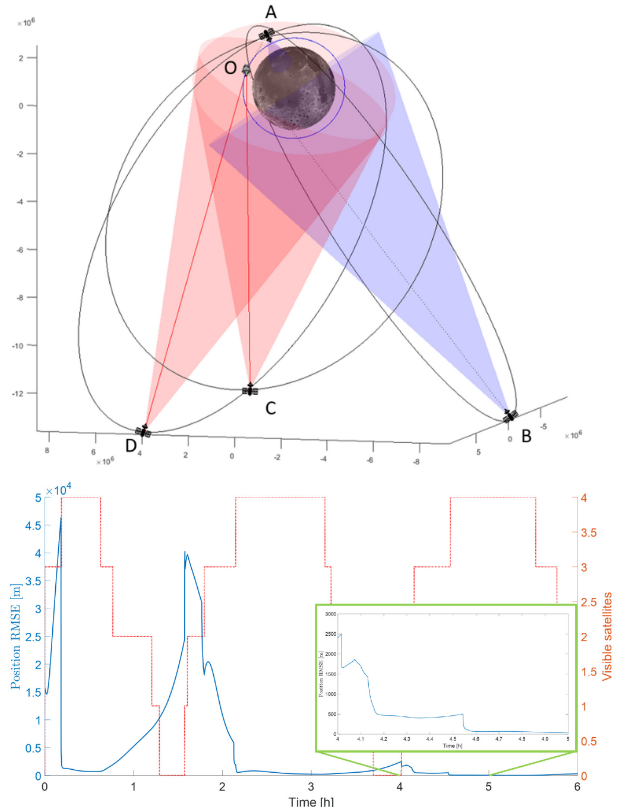
Simona
Il Laboratorio di Meccanica del Volo “M.D. SIRINIAN” della Scuola di Ingegneria Aerospaziale è pronto per le prove sperimentali della terza ed ultima fase del PNRM SIMONA
Responsabili del laboratorio:
Paolo Teofilatto e Stefano Carletta
Titolo della Ricerca:
PNRM SIMONA (Sistema Italiano Messa in Orbita tramite NAve)
Ente capofila:
Scuola di Ingegneria Aerospaziale
Partner:
Fincantieri, Cetena, Gauss srl, Maba Consulting.
La possibilità di disporre e gestire un sito di lancio rappresenta oggi un fattore non trascurabile verso l’indipendenza nell’accesso allo spazio. Al di là delle capacità tecnologiche e gestionali richieste per il corretto sfruttamento del sito, la geografia e vincoli di sicurezza fanno sì che alcune nazioni, tra cui l’Italia, non possano sviluppare queste infrastrutture sul proprio territorio.
Un’alternativa in questi casi è rappresentata del lancio da mare. Il PNRM SIMONA si pone l’obiettivo di sviluppare un sistema di estrazione per micro-lanciatori da installare su nave. Questo deve garantire un processo di estrazione ad accelerazione limitata ma che consenta al lanciatore di raggiungere una quota minima di sicurezza rispetto al ponte della nave prima di accendere i motori.
Per verificare il progetto di estrazione, abbiamo realizzato e testato un dimostratore in scala ridotta alimentato ad aria compressa o piccole cariche pirotecniche. Prove sperimentali sono state eseguite con carichi fino a 1000 kg. I test proseguiranno nelle prossime settimane presso il Campo di Tiro “Le Macchie” vicino L’Aquila.
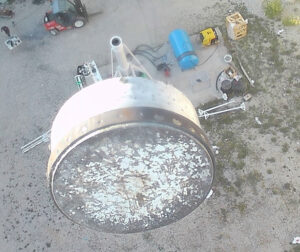
Foto del sabot e del sistema di lancio ripresi dalla telecamera installata a bordo del carico
Laboratori
AerosPower Lab
AerosPower (Aerospace Power) is a laboratory of electronics mainly committed to investigate and produce power systems for aerospace vehicles. Advanced and original solutions are developed for applications in launchers, spacecrafts, rovers, and aircraft. The research and development activities
are carried out at different levels:
System
The activities at a system level are intended to develop leading-edge configurations for generation and management
of on-board power in specific missions and particular types of vehicle.
Recent noteworthy applications include: space tug, rover for moon exploration, spacecraft with electric propulsion for the inner Solar System, propulsion by electro-dynamic tether;
Subsystem
Subsystems are developed for on-board power management and distribution. Recent achievements comprise:
solar Arrays and complete power conversion management units per rovers, micro- and nano- satellite as well as hybrid power sources for pulsed loads in launchers and power units for aircrafts. Systems for wireless power transfer are investigated too;
Circuit
At a circuit level the activities are intended to study leading edge design techniques for power converters, for their controllers as well as for protection devices, suitable for the typical harsh requirements in terms of reliability, efficiency, lightness and compactness, as well as for electromagnetic compatibility.
Contacts:
prof. Luigi Schirone, luigi.schirone@uniroma1.it

Arca Lab
The Laboratory of Automation, Robotics and Controls for Aerospace – ARCAlab of the School of Aerospace Engineering, conducts its research and experimentation activities in the fields of robotic aerospace systems and control of space vehicles. ARCAlab has collaboration with Asi, Esa and national and international aerospace companies and research institutes.
The students are involved in the laboratory activities in the framework of research projects.
The laboratory has a facility with a simulated lunar surface and a moving frame to test algorithms for the autonomous landing of interplanetary probes and the rendez-vous and docking maneuvers. Moreover, the experimentation activities involve the guidance, navigation and control of mobile robots for the planetary exploration, and the developing of prototypes of sensors and actuators for the control of space vehicles.
Contacts:
prof. Fabio Curti, fabio.curti@uniroma1.it
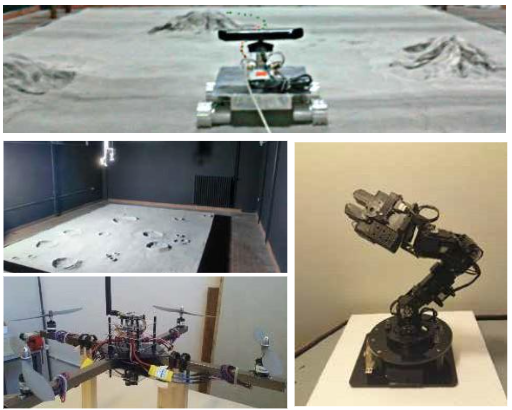
Eosial Lab
The Eosial – Earth Observation Satellite Images Application Lab is a lab of satellite remote sensing images dedicated to develop innovative applications through the use of optical data (multi- and hyper-spectral) and SAR, integrated with GIS analysis. The fields of interest include: the monitoring of fires, monitoring of volcanic eruptions, the detection of oil spills, monitoring and mapping of agricultural areas, crop early warning, detection of pests and diseases, the development of applications related to safety issues (borders permeability, monitoring of refugee camps) and disaster management (dust storm, damage assessment, early warning, etc.).
The activities of the laboratory is oriented, in particular, to the development of monitoring applications performed automatically and in real time or near-real-time. The laboratory is equipped with the software and hardware tools necessary for satellite images processing and an extensive archive of satellite images including images in low, high and very high spatial resolution, optical and radar.
The hardware equipment includes:
acquisition system of the SEVIRI sensor on board the geostationary satellites of the MSG (Meteosat Second Generation) series; the system also acquires resampled images of the MODIS sensors, AVHRR and GOES geostationary satellites (USA) and HIMAWARI (Japan).
FLIR thermocamera;
C LAI 2200 Plant Canopy Analyzer (LI-COR 2012) and Dualex 4 – A Force for estimating LAI (Leaf Area Index) and the content of chlorophyll and polyphenols in the leaves;
drone esarotors (SAPR SF6) equipped with a multispectral camera MicaSense with 5 channels.
Contacts:
prof. Giovanni Laneve, Giovanni.laneve @uniroma1.it

Flight Mechanics Lab
Flight Mechanics Lab is dedicated to Prof. Michele Dicran Sirinian and is devoted to the design, manufacturing and testing of scaled models of aerospace vehicles (https://web.uniroma1.it/scuolaingegneriaaerospaziale/flight-mechanics-lab)

Scaled aircraft design and testing
Scaled models are designed, manufactured and able to flight. From the flight data recorded on-board (gyros, accelerometers, altimeters, pitot tubes, magnetometers) the aerodynamic properties (stability derivatives) of the vehicles are derived. The following scaled modes are in the Flight Mechanics Lab:
– Dicran aircraft (original design), a 1/5 scaled model of an aircraft able to flight over Mars;
– Cessna (accurate reproduction of a 1/5 scaled model);
– C130 J (accurate reproduction of a 1/10 scaled model).
Air launch design and testing
Flight test of separation between the C130 J and a 1/10 scaled model of a rocket able to inject a microsatellite in orbit,
are performed to test the numerical models of airdrop, parachute extraction and stabilization, and evasion maneuvers.
Scaled rocket design and testing
Rocket design, manufacturing and launch is a part of the course “Flight Mechanics of Launch and Reentry Systems”.
Many scaled rockets have been designed through the years and several units are available in the Flight Mechanics Lab, with apogee capability ranging from 200 to 2000 meters of altitude. All rockets are endowed with navigation and attitude sensors (gyros, pitot tubes, altimeters, accelerometers, magnetic sensors, GPS antenna, microcamera).

The rocket propellant is produced in-house and tested outdoor (watch http://youtu.be/fCUPcT8BGYI)
Satellite design and manufacturing Structure and mechanical components of Cubesat, PocketQube and microsatellites are produced in the Flight Mechanics Lab by the available 3D printer and CNC machine.
An integration room is available for Cubesat satellites integration (e.g. Tigrisat and STECCO, launched in 2014 and 2021).
Experimental testing of attitude determination and control systems Attitude determination and control systems are tested using a 3x3x3 m3 Helmholtz cage, that allows recreating the Earth magnetic field experienced by the satellite during its orbital motion, and a spherical airbearing which allows simulating zero-gravity rotation.
Maritime launch design and testing Experimental testing of a 1/10 scaled model for a microlauncher ejection system to be used for maritime launch.
The ejection system can operate using pressurized air or ballistic charges.
Contacts:
prof. Paolo Teofilatto, paolo.teofilatto@uniroma1.it
Guidance and Navigation Lab
Research at the lab deals with the different aspects of the Guidance, Navigation and Control loop which is instrumental to all modern aerospace ventures. Applications of current activities include rendezvous and docking between spacecraft, grasping and deorbiting of space debris, command of rovers. Significant heritage on formation flying, large and deployable space systems and structures and swarm-like, behavioral controlled systems, Global Navigation Satellite Systems (GPS, Galileo), inertial and optical navigation is present. The lab stresses, whenever possible, real world testing with the available experimental setups. Students from different degree levels are deeply involved in research activities.

Contacts:
prof. Marco Sabatini, marco.sabatini@uniroma1.it
Prof. Paolo Gasbarri, paolo.gasbarri@uniroma1.it
Prof. Giovanni Palmerini, giovanni.palmerini@uniroma1.it
Nanosatellite Electronics Lab
The Nanosatellites Electronics Lab is equipped with instrumentation for the design, simulation, test and prototyping of analog, digital and mixed signal electronic circuits for space applications. The activities carried out in the laboratory include the development of the flight software for the ABACUS on-board computer and the test of payload electronics developed at the School of Aerospace Engineering.
The lab is also used for the didactic activities oriented to familiarize the students with the satellite electronics as well as with the lab instrumentation and procedures. The equipment of the lab includes a soldering workstation with ESD protection, low noise power supplies, waveform signal generators, oscilloscopes, spectrum analyzer, logic analyzer, programming tools for digital embedded systems and ESD protected working area.
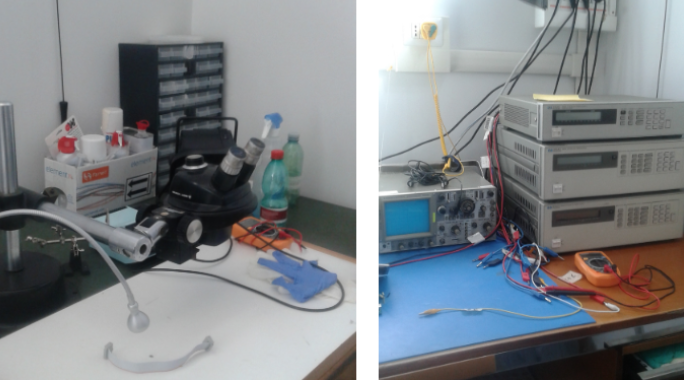
Contacts:
prof. Augusto Nascetti, augusto.nascetti@uniroma1.it
Pleiades
The Pleiades – Prototyping Lab for Evaluation and Integration of Analytical Devices with Embedded Sensors is devoted to the design, fabrication and test of microfluidic lab-on-chip systems with integrated thin-film electronic components for biological and biochemical research in space. Target applications include astronauts’ health monitoring devices and instruments for the search for extinct or extant life traces in the solar system.
The lab is a fully equipped clean room supporting all the activities that go from the preparation of the experiments to the implementation of bioanalytical protocols in a controlled environment for the assessment of the performances of the micro-analytical devices and of the dedicated control and readout electronics.
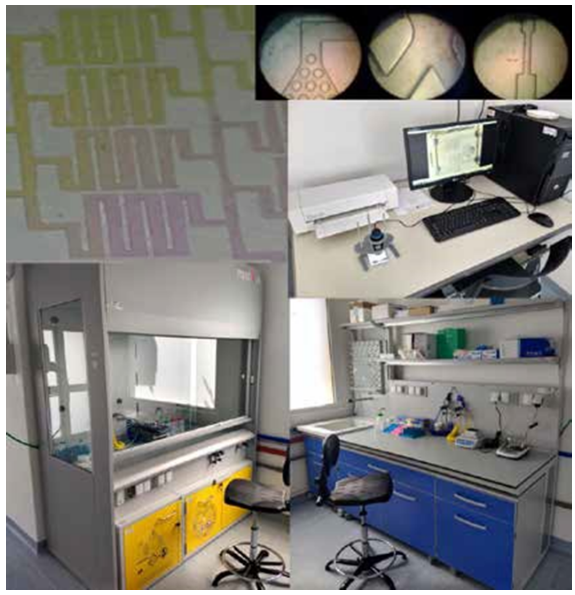
Contacts:
prof. Augusto Nascetti, augusto.nascetti@uniroma1.it
SiaSpacePropulsionLab
For years, the Sapienza Space Propulsion Lab offers the possibility for Aerospace Engineering students to design, implement and launch mini-rockets! Through materials easily available, a black powder engine and calculation tools, such as Matlab and Open Rocket, we have created mini-rockets and participated in a competition completing the mission: to ensure that the rocket landed in conditions to safeguard the precious payload: in our case, a hard-boiled egg.
In addition to entertainment, the activities we do give us the opportunity to replicate in very small-scale systems of common use in the aerospace sector, to design and test platforms that can find useful applications in various sectors, in particular the science and testing of technologies and of materials in conditions that are not easily replicable.
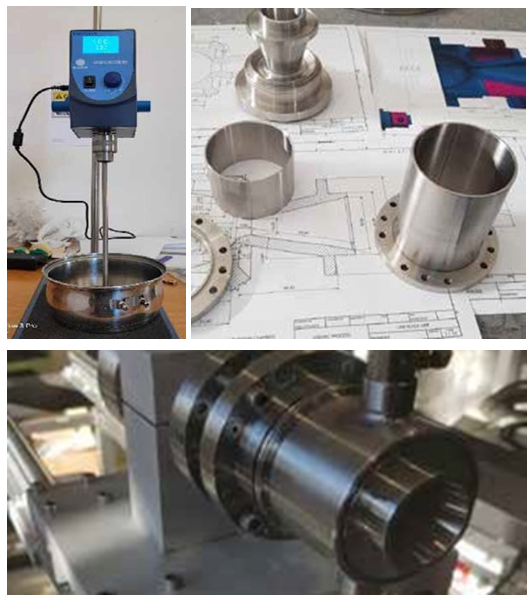
Contacts:
prof. Antonella Ingenito, Antonella.Ingenito@uniroma1.it
The ground station
The satellites developed by the School are tracked by the SIA Ground Station that provides the RF communication with the spacecraft. The SIA Ground Station ensures the uplink of telecommands both in VHF and UHF bands and the collection of telemetry and low bit-rate payload data in the same bands while, for higher data rates, an S-band section is available. The Ground Station hardware includes a Yagi Uda UHF-VHF antenna system with low noise preamplifier, an S-band antenna with a 4-meter dish, an ICOM910 radio, a SYMEK TNC and a YAESU G232B rotor controller.
A software design radio section has been recently added to the available equipment. The ground station equipment is also used for testing the satellite communication subsystems on ground.
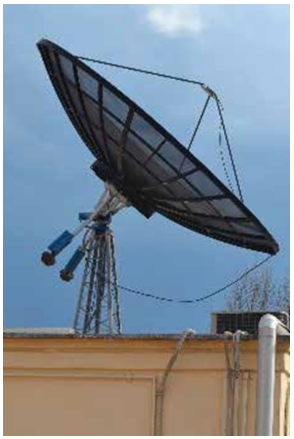
Thermo-vacuum and Optics lab
The thermo-vacuum and optics lab is one of the three main installations of the LARES-lab. The other two are the ISTARC center and the optical fiber lab described later in the document. All the labs are used both for research and educational purposes. The students will have the opportunities during the courses to see and operate the facilities. During the thesis more advanced activities and research will be performed by the students.

Thermovacuum chamber
It is small cubic thermo-vacuum chamber of 60x60x60 cm internal size, realized specifically for testing the cube corner reflectors of LARES satellite (Figure 1). It is capable of reaching very high vacuum conditions and it is suitable also for testing nanosatellites and small payloads in simulated space environment Several thermal sensors can be attached on the specimen as well as resistive heaters to control the specimen temperature (Figure 2).
An optical circuit is available at the side of the chamber for testing components in air or under space simulated condition inside the thermo-vacuum chamber. A remote control of the thermovacuum chamber is in progress for allowing the students to control the tests in the thermovacuum chamber from home.
ISTARC – International Space Time Analysis Research Centre
ISTARC Lab was born for supporting LARES mission whose objective is to test frame-dragging predicted by the theory of general relativity. The Earth rotation drags spacetime and the orbital plane of satellites with it. The orbit determination of the LARES and LAGEOS satellites and the accurate estimation of the classical perturbations acting on the satellites will allow to measure the node shift, produced by general relativity (Figure 3). ISTARC is also credited by NASA for providing the position of the LARES satellite to the International Laser Ranging Service (ILRS) for tracking the satellite. Since lasers have a very narrow light beam the target position need to be determined very accurately. Therefore the predictions (more technically known as Consolidated Prediction File or briefly CPF) have to be much more precise than the predictions, calculated using two-line elements, used for tracking satellites with radars. In Figure 4 are reported, as an example, the differences in meters between the predicted and the actual positions of LARES satellite in January 2015.

Optical Fiber Strain Gauges
The use of fiber optic sensors and specifically of the so-called Fiber Bragg Gratings (FBGs) for structural health monitoring, are studied in the lab. Several applications have been performed on test items such as a sailing boat mast and a drop keel, with many sensors for acquiring deformation and shape in real time. Students have the opportunity to operate the mast and the keel installations during the courses at the School of Aerospace Engineering. The interrogation system is a 4 channels interrogator with a wide band (1510–1590 nm) and 1 kHz data acquisition frequency.
Contacts:
prof. Antonio Paolozzi, Antonio.Paolozzi@uniroma1.it
Prof. Claudio Paris, Claudio.Paris@uniroma1.it
Cosa dicono di noi
L’opinione di chi ha frequentato la nostra scuola
Faq
FAQ – Domande frequenti sulla Scuola di Ingegneria Aerospaziale
Cosa si studia alla Scuola di Ingegneria Aerospaziale?
Alla Scuola di Ingegneria Aerospaziale si studiano le materie utili a comprendere e progettare i sistemi e i sottosistemi aerospaziali, come:
Astrodinamica
Propulsione
Sistemi di controllo
Elettronica
Telecomunicazioni
Strutture aerospaziali
Robotica
Navigazione
Controllo termico
Telerilevamento
Intelligenza artificiale
Quali sono gli sbocchi lavorativi per un ingegnere aerospaziale?
Gli ingegneri aerospaziali possono lavorare in diversi settori industriali, tra cui:
Ingegneria Aeronautica e Aerospaziale
Ricerca e sviluppo
Automotive
Difesa e sicurezza
Energia
Trasporti
Quali sono i requisiti per accedere alla Scuola di Ingegneria Aerospaziale?
Per accedere alla Scuola di Ingegneria Aerospaziale è necessario:
Aver conseguito un titolo di studio in Ingegneria conseguito in Italia e ottenuto al termine di 5 anni (laurea magistrale o laurea a ciclo unico) o un titolo equivalente estero.
Non è previsto alcun test di ammissione.
Presentare la domanda di iscrizione con le seguienti modalità:
Per l’immatricolazione lo studente deve inviare all’indirizzo e-mail presidesia@uniroma1.it i seguenti documenti :
1) copia di un documento d’identità valido
2) copia del certificato del titolo di studio in ingegneria
Al ricevimento della documentazione, l’amministrazione della Scuola comunicherà all’indirizzo email dello studente le istruzioni per il perfezionamento dell’iscrizione.
E’ consigliabile inviare la documentazione il prima possibile, a partire da giugno 2024, così da poter completare l’immatricolazione per l’inizio delle lezioni, previsto per la seconda metà di settembre. E’ comunque possibile presentare domanda di iscrizione fino alla fine del mese di ottobre (anche in questo caso inviando la documentazione all’indirizzo indicato, affinché la segreteria della Scuola si adoperi per la predisposizione dei bollettini di pagamento delle tasse universitarie).
Quanto dura il corso di studi in Ingegneria Aerospaziale?
Il corso di studi in Ingegneria Aerospaziale dura:
1 anno per coloro che sono in possesso di un titolo di studio in Ingegneria Aeronautica o Aerospaziale o Astronautica o Spaziale, ottenuto al termine di 5 anni di corso di studio universitario
2 anni per coloro che sono in possesso di un titolo di studio in Ingegneria magistrale (o quinquennale a ciclo unico) in Ingegneria con qualunque specializzazione (come Meccanica, Elettrica, Elettronica, Informatica, delle Telecomunicazioni)
Quali sono i costi di iscrizione alla Scuola di Ingegneria Aerospaziale?
I costi di iscrizione alla Scuola di Ingegneria Aerospaziale variano a seconda del reddito dello studente.
Il percorso di studi presso la Scuola di Ingegneria Aerospaziale prevede la possibilità di stage/tirocini?
Sì, il percorso di studi della Scuola di Ingegneria Aerospaziale prevede la possibilità di effettuare stage e tirocini presso le aziende del campo aerospaziale che collaborano con la Scuola, durante i quali gli studenti possono:
Applicare le conoscenze acquisite in aula
Acquisire nuove competenze
Fare esperienza in un ambiente lavorativo
Ampliare il proprio network professionale
Quali sono le borse di studio disponibili per gli studenti della Scuola di Ingegneria Aerospaziale?
La Scuola di Ingegneria Aerospaziale mette a disposizione diverse borse di studio per gli studenti meritevoli; in particolare, sono al momento disponibili delle borse di studio offerte da MBDA a studenti interessati all’immatricolazione al corso di laurea a statuto speciale della Scuola di Ingegneria Aerospaziale. Ogni borsa, riservata a cittadini italiani, copre le tasse universitarie più 5000 Euro di premio di frequenza.
Si tratta della terza edizione dell’accordo MBDA Italia – Scuola che ha visto la totalità degli studenti selezionati impiegati a tempo indeterminato presso varie aziende.
Gli studenti interessati possono contattare la Scuola al seguente indirizzo:
Come posso contattare la Scuola di Ingegneria Aerospaziale?
È possibile contattare la Scuola di Ingegneria Aerospaziale tramite:
Sito web: https://web.uniroma1.it/scuolaingegneriaaerospaziale/
Email: contatti.sia@uniroma1.it; presidesia@uniroma1.it
Non esitare a contattarci se hai altre domande.

